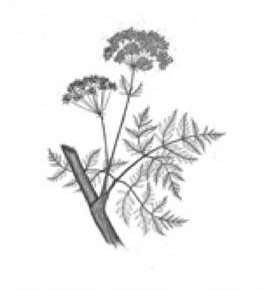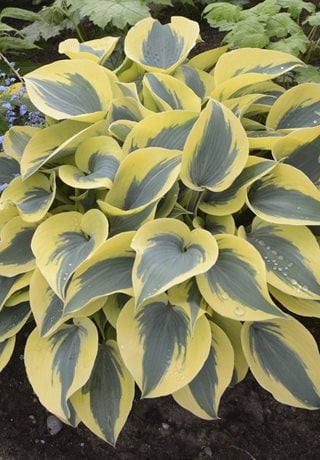12 Poisonous and Notorious Plants
The author of Wicked Plants identifies the biggest villains
Much has been written of plants we love - roses and jasmine, Italian herbs and heritage apple trees - but what about the plants that give us cause to fear? I personally love a plant with a checkered past, a rap sheet, a dark secret. When I stumble across one of these evildoers, I'm always tempted to sidle up alongside them and whisper, "They say you killed a man." There's nothing like a good villain. Here are some of the most notorious criminals in the plant kingdom.
Strychnine Tree (Strychnos nux-vomica): A 50-foot-tall tree that favors the tropics. The seeds contain strychnine, a nasty poison that goes to work on the nervous system, flipping switches that deliver an unstoppable river of pain. Favored by a 19th-century serial killer named Dr. Thomas Neill Cream, who slipped it to his patients. Poor dears.
Poison Hemlock (Conium maculatum): Socrates might be this plant's most famous victim, but I like the description by Nicander, a Roman doctor who recounted its effects in about 150 BC. "This drink assuredly looses disaster upon the head bringing darkness of night? for a short while the victim draws breath like one swooning, and his spirit beholds Hades."
Castor Bean (Ricinus communis): Ricin, the poison extracted from this gorgeous tropical plant, was used to assassinate Communist defector Georgi Markov in the famous "umbrella murder."
Oleander (Nerium oleander): A common garden shrub in warm climates, but don't let that reassure you. A woman is doing time on California's death row right now for murdering her husband: She started with oleander and finished the job with antifreeze.
Death Cap Mushroom (Amanita phalloides): Okay, it's not a plant exactly. But this pale little fungus is responsible for about 90 percent of all mushroom fatalities worldwide. Only a lucky few get a liver transplant in time to save their life.
Wormwood (Artemesia absinthum): This ne'er-do-well stands falsely accused. While the fragrant herb is used to flavor absinthe, it's not fair to blame the drink's maddening powers solely on wormwood. As a 130-proof spirit, absinthe is more than twice as alcoholic as gin or vodka, making it lethal all by itself.
Calabar Bean (Physostigma venenosum): Dr. Livingstone, I presume? The famous explorer reported that this bean was used in Africa to dispense justice: If it killed you, you were guilty, and if it didn't, you must be innocent. Sounds fair, right?
Death Camas (Zigadenus venenosus): Speaking of explorers, one historian believes that members of the Lewis and Clark expedition might have eaten this bulb by accident, mistaking it for an edible look-alike. They were sick for weeks, then struggled on through a miserable winter.
Opium Poppy (Papaver somniferum): Die-hard gardeners grow this flower with impunity (though it's illegal) - but don't forget that heroin has claimed the lives of Billie Holiday, Janis Joplin, Dee Dee Ramone and countless others.
White Snakeroot (Eupatorium rugosum syn. Ageratina altissima): The weed that changed the life of the man who changed our lives. Abraham Lincoln was only 9 when his mother died of milk sickness, an illness caused by drinking the milk of cows that have grazed on this poisonous plant.
Monkshood (Aconitum napellus): The leaves bear a striking resemblance to parsley, and the roots have been mistaken for horseradish. Nazis used it as an ingredient for poisoned bullets. You should wear gloves around it in the garden.
Tobacco (Nicotiana tabacum): Tobacco leaves pump out nicotine, a substance so toxic that it makes an effective pesticide - but it doesn't just kill bugs. Ninety million people dead - enough said.
RELATED:
24 Plants Poisonous to Dogs & Cats
